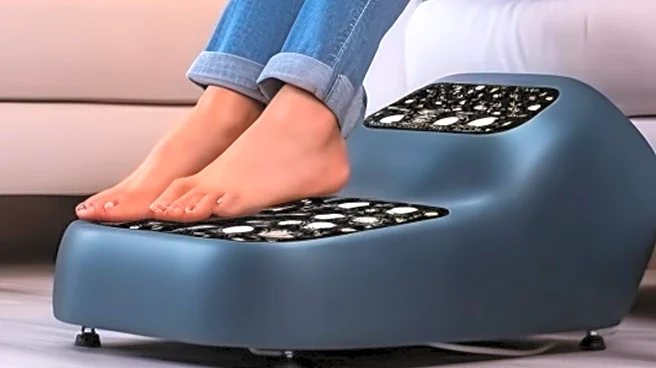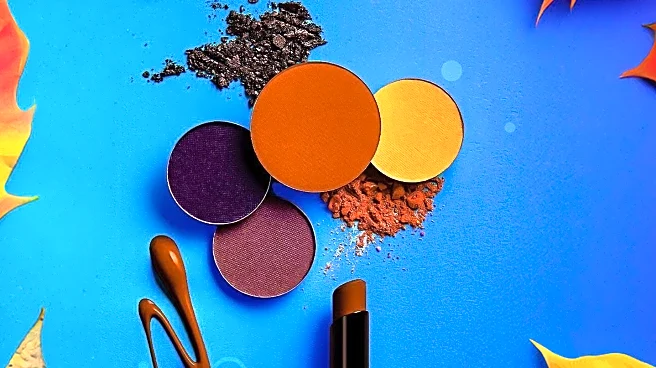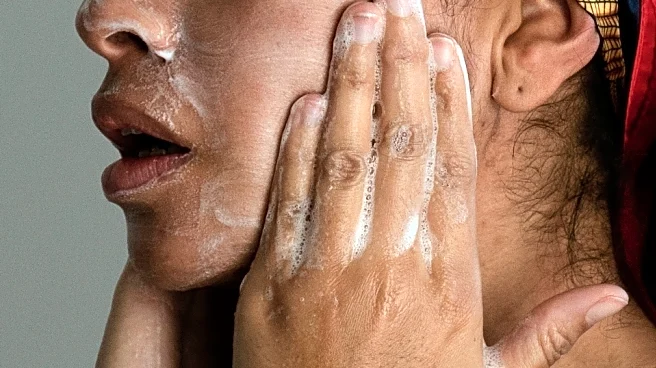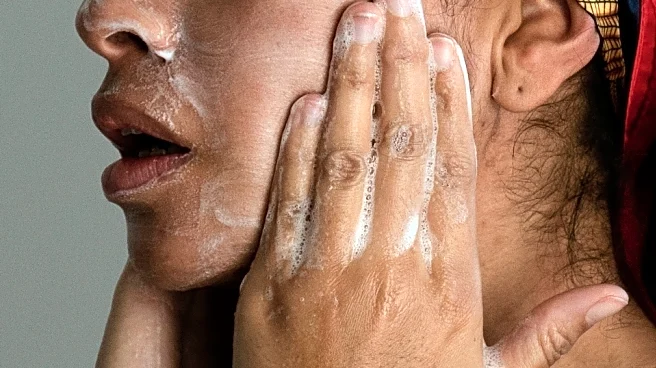What is the story about?
What's Happening?
A new red light hat designed for hair growth is gaining attention for its effectiveness. The hat, which uses LED panels to emit red light, is intended to revitalize the scalp and support healthy hair growth. Users have reported noticeable improvements in hair density and thickness after consistent use. The technology behind the hat is based on a 2020 study that demonstrated increased hair growth with red light therapy. Dermatologist Dendy Engelman explains that the therapy boosts cellular regeneration and strengthens hair follicles, enhancing overall scalp health. The hat is discreet and can be worn during daily activities, making it a convenient option for those experiencing mild hair loss.
Why It's Important?
Hair loss affects a significant portion of the population, particularly men, and finding effective treatments can be challenging. The red light hat offers a non-invasive and scientifically backed solution that could help many individuals maintain or improve their hair health. Its ease of use and lack of side effects make it an attractive alternative to traditional treatments like Rogaine, which can cause skin irritation. As hair loss can impact self-esteem and confidence, this development provides hope for those seeking to address their hair concerns without resorting to more drastic measures.
What's Next?
Users are advised to maintain consistent use of the red light hat to see continued benefits, as stopping the therapy may result in the return of hair loss. Pairing the hat with other treatments, such as platelet-rich plasma injections, could enhance results. As the product gains popularity, further studies and user testimonials may provide additional insights into its long-term effectiveness and potential improvements.
Beyond the Headlines
The introduction of the red light hat highlights the growing interest in non-invasive and technology-driven solutions for personal care. It reflects a broader trend towards integrating scientific research into consumer products, offering new avenues for addressing common health and wellness issues. This development may encourage more innovation in the field of dermatology and hair care.
AI Generated Content
Do you find this article useful?














